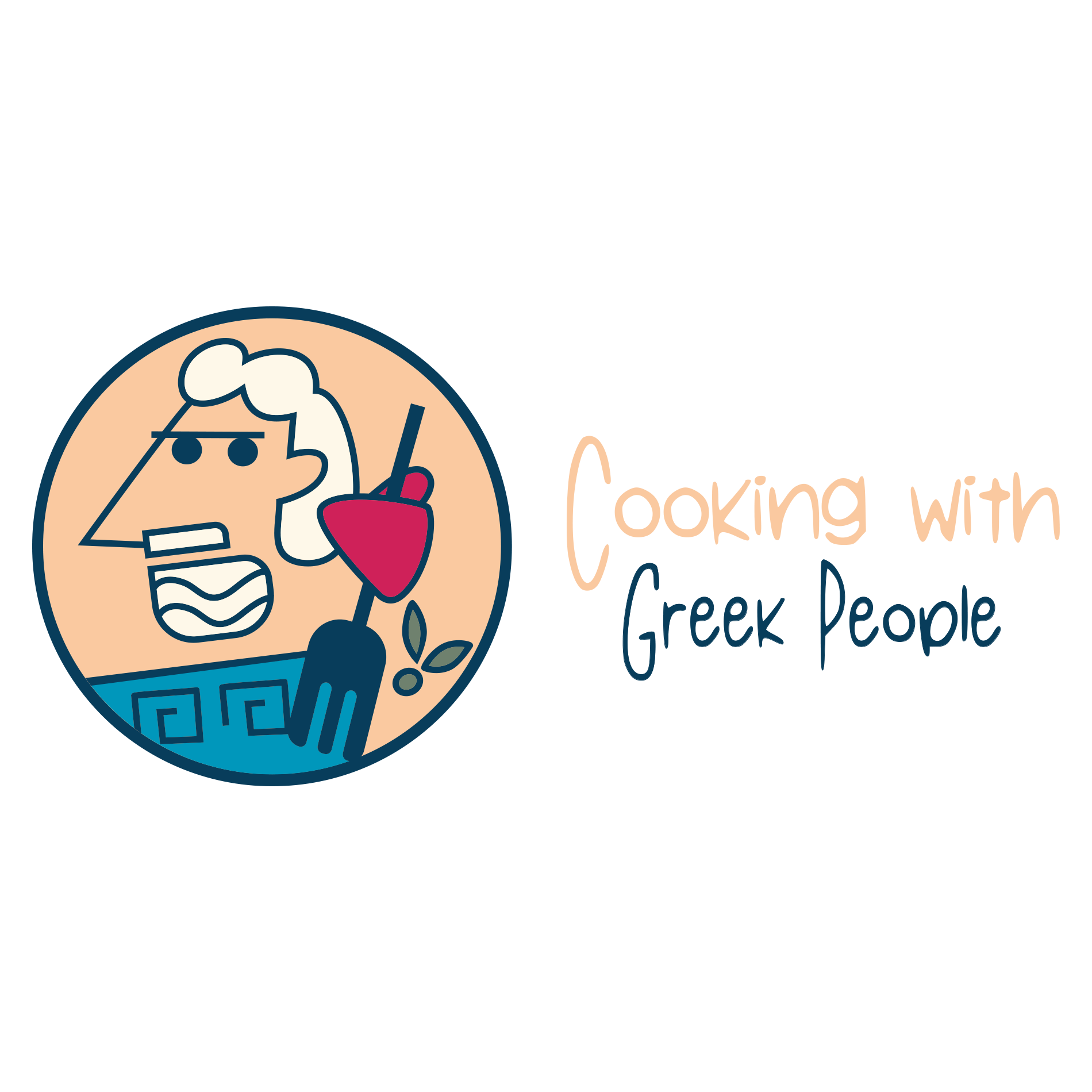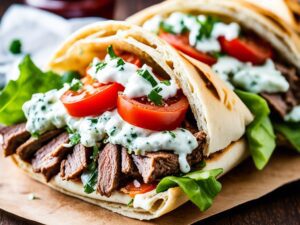
Ancient and Traditional Greek Cooking Techniques: From Clay Ovens to Slow Cooking
Greek cuisine is known for its rich culinary heritage, and traditional cooking techniques play a vital role in the creation of authentic Greek dishes. These techniques have been passed down through generations, preserving the essence of Greek culture and flavors. In this article, we will explore the various traditional Greek cooking techniques, their importance in Greek cuisine, and how they have stood the test of time.
Overview of Traditional Greek Cooking Techniques
Greek cuisine has evolved over time, but it remains rooted in ancient cooking methods that are still used today. Greeks have a deep appreciation for local ingredients and embrace simple methods of cooking to let the natural flavors shine. By using traditional cooking tools such as clay pots and spits, Greeks connect with their ancient past and maintain a strong link to their culinary heritage.
One of the widely used methods of cooking in Ancient Greece was fire-based cooking, which is still popular today. Greeks love to grill their food, infusing it with a unique smoky flavor that adds depth to the dishes. Whether it’s grilling succulent meats or charring vegetables, the art of grilling is deeply ingrained in Greek culinary traditions.
Boiling and baking were also common methods of cooking in ancient times and are still prevalent in Greek cuisine. Greeks have mastered the art of boiling ingredients to perfection, extracting flavors while retaining the nutritional value of the food. Baking, too, remains a fundamental technique in Greek cooking, with traditional baked desserts like koulourakia, baklava, and melopita continuing to be enjoyed today.
To illustrate the use of traditional Greek cooking techniques, let’s take a closer look at one popular dish: roasted lamb. Slow-roasted in a clay oven or on a spit, the lamb becomes incredibly tender and flavorful, showcasing the expertise of Greek cooks in using ancient cooking methods to create delicious meals. This traditional technique infuses the meat with a smoky aroma, resulting in a dish that is both succulent and satisfying.
Importance of Clay Ovens in Greek Cuisine
Clay ovens, also known as “fournos,” hold great importance in Greek cuisine.They are commonly used for slow-cooking various dishes, allowing the flavors to develop and intensify over time. Clay ovens are especially favored for roasting chicken, lamb, and vegetables, as the enclosed environment retains moisture, resulting in tender and juicy meats.
Clay pot cooking is another traditional method that is still popular in Greece. Dishes are packed into clay pots and slow-cooked either in clay ovens or buried in hot coals, resulting in meals that are bursting with flavor. The clay pots provide even heat distribution, ensuring that the ingredients are cooked gently and retain their natural taste.
Cooking on a spit, known as “souvla” or “souvlaki,” is a common method in Greek cuisine, particularly during Easter when lamb is traditionally cooked on a spit. This technique involves skewering the meat and roasting it over an open flame, resulting in a succulent and flavorful dish that is a centerpiece of celebratory feasts.
While many home cooks in Greece have adapted to modern cooking methods, traditional techniques are still valued and cherished, especially in rural areas and during cultural celebrations. Trying foods cooked using traditional methods is considered a must-have experience for anyone seeking an authentic taste of Greek cuisine.
To further emphasize the importance of clay ovens in Greek cuisine, let’s consider the dish of roasted chicken and green beans. Slow-cooked in a clay oven, the chicken becomes incredibly tender, while the green beans absorb the flavors of the meat and herbs, creating a delightful combination of tastes. This traditional cooking technique highlights the use of clay ovens to achieve perfectly cooked dishes that are full of depth and aroma.
Benefits and Process of Slow Cooking in Greek Dishes
Slow cooking is a cornerstone of Greek culinary traditions, allowing flavors to develop and ingredients to become tender and juicy. This method enhances the taste and texture of dishes, resulting in rich and succulent flavors that are characteristic of Greek cuisine.
The process of slow cooking involves have been using wood ovens for centuries to cook bread, meats, and pizza. This gentle cooking technique allows the ingredients to simmer and meld together, creating complex flavors that are deeply satisfying. Greek cooks have mastered the art of slow cooking, using it to transform simple ingredients into mouthwatering dishes.
Clay pots and slow cookers are often used for slow cooking in Greek cuisine. These vessels ensure even heat distribution and retention, allowing the dishes to cook slowly and evenly. The porous nature of clay pots also helps to infuse the food with flavors, resulting in a unique and delightful taste.
To illustrate the benefits of slow cooking, let’s consider the famous Greek dish, moussaka. This baked dish consists of layers of eggplant, meat, and béchamel sauce, cooked in the oven until the flavors meld together and the dish becomes irresistibly creamy. The slow cooking process allows the ingredients to blend harmoniously, creating a hearty and comforting meal that is loved by Greeks and visitors alike.
Examples of Popular Greek Dishes Prepared Using These Techniques
Traditional Greek cooking techniques have given rise to a wide variety of popular dishes that are beloved by people around the world. These dishes exemplify the mastery of Greek cooks in utilizing ancient cooking methods to create culinary marvels. Let’s explore some of these dishes in more detail:
- Roasted lamb: Slow-roasted in a clay oven or on a spit, the lamb becomes tender and flavorful, with a smoky aroma that is characteristic of Greek cuisine.
- Moussaka: This baked dish features layers of eggplant, meat, and béchamel sauce, cooked to perfection in the oven. The slow cooking process allows the flavors to meld together, resulting in a hearty and satisfying meal.
- Baklava: This sweet and indulgent dessert is made with layers of phyllo pastry, nuts, and a honey syrup. Baked to perfection, baklava showcases the skill of Greek cooks in creating a delicate and irresistible treat.
- Stuffed vegetables: Peppers, tomatoes, or zucchini are hollowed out and filled with a mixture of rice, herbs, and spices, then baked in the oven until tender. This traditional dish highlights the use of baking as a cooking technique in Greek cuisine.
- Souvlaki: Skewered meat, usually pork or chicken, is marinated and grilled over an open flame. This popular street food exemplifies the mastery of grilling techniques in Greek cooking.
These examples demonstrate the diverse range of dishes that can be prepared using traditional Greek cooking techniques. From slow-roasting to baking and grilling, each method contributes to the unique flavors and textures that define Greek cuisine.
Ancient Greek Cooking Methods Still Used Today
Greek culinary traditions are deeply rooted in ancient cooking methods, many of which are still practiced today. These methods have stood the test of time, preserving the authenticity of Greek cuisine and its connection to the past.
Fire-based cooking methods, such as grilling and roasting, were widely used in Ancient Greece and continue to be popular in Greek cuisine. These techniques infuse the food with a smoky flavor and create a delightful charred exterior that enhances the overall taste.
Boiling and baking, which were common methods in ancient times, are still widely employed in Greek cooking. Boiling is used to extract flavors from ingredients while maintaining their nutritional value. Baking, on the other hand, imparts a unique depth of flavor to dishes, creating delicious and aromatic meals.
The use of clay pots and spits for slow cooking and roasting has been a hallmark of Greek cooking since ancient times. Clay pots are still utilized for slow-roasting vegetables and meat, providing an earthy flavor and tender texture to the dishes.
Baked desserts like koulourakia, baklava, and melopita have remained part of Greek culinary traditions, showcasing the enduring popularity of ancient Greek cooking methods. These sweet treats continue to be enjoyed today, delighting both locals and visitors with their rich flavors and indulgent textures.
To further illustrate the use of ancient Greek cooking methods, let’s consider the dish of koulourakia. These traditional Greek cookies are baked to perfection, showcasing the skill and expertise of Greek bakers in utilizing baking techniques that have been passed down through generations. The result is a batch of delicious cookies that are enjoyed on various occasions, from holidays to everyday indulgence.
Adapting Traditional Methods in Modern Times
While modern cooking methods have gained popularity worldwide, traditional techniques continue to hold a special place in Greek cuisine. Greeks have found ways to incorporate modern technology and convenience while preserving their culinary heritage.
In Greece, traditional cooking methods are still highly valued, especially in rural areas and during cultural celebrations and festivals. These occasions provide an opportunity for Greeks to showcase their traditional dishes, prepared using time-honored techniques. The act of cooking becomes a way to honor the past and connect with their cultural roots.
In recent years, Greeks have also embraced modern cooking appliances and techniques, allowing them to adapt traditional methods to fit their modern lifestyles. This fusion of old and new ensures that traditional Greek cooking techniques remain relevant in the ever-changing culinary landscape.
For example, while clay ovens are still widely used, many Greek households now also have modern ovens that offer convenience and efficiency. This allows cooks to explore a wider range of cooking techniques while still preserving the essence of traditional Greek cuisine.
The ability to adapt traditional methods in modern times has allowed Greek cuisine to evolve and remain vibrant. Greeks have found a delicate balance between preserving their culinary traditions and embracing the convenience and innovation of modern cooking.
Wood Ovens in Greek Cooking
Wood ovens have been an integral part of Greek cooking for centuries, adding a distinct flavor and charm to various dishes. Ancient Greeks developed the modern-day wood oven as a clay oven known as “ipnos”. These ovens are still widely used in Greece, particularly for baking bread, cooking meats, and even making pizza.
The process of cooking in a wood oven requires careful attention to detail. Before cooking, it is important to ensure that the oven is clean and free from any debris. The wood is then burned in the middle of the oven, and slow-burning logs are added to evenly heat the oven. The heat from the wood fire is absorbed by the clay walls, creating a consistent and radiant source of heat for cooking.
To determine if the wood oven is ready for cooking, one can throw flour into the oven. If the flour turns yellow to burnt within three minutes, the oven is at the ideal temperature for cooking pizzas. However, caution must be exercised when cooking in a wood oven, as the high heat can pose a risk. It is advisable to avoid using glass dishes that may shatter due to the intense heat.
The use of wood ovens adds a unique and authentic touch to Greek cooking, creating flavors that cannot be replicated with other cooking methods. The Omega Foods brand offers a range of wood ovens for those who wish to elevate their backyard cooking experience. With a wood oven, individuals can bring the taste of Greece into their own homes and savor the flavors of traditional Greek cuisine.
Specific Greek Cooking Methods for Different Types of Dishes
Greek cuisine encompasses a wide variety of dishes, each with its own specific cooking methods. These methods have been refined over generations, resulting in a diverse range of flavors and textures that define Greek culinary traditions. Let’s explore some specific Greek cooking methods for different types of dishes:
- Ladi and Ladthera: These methods involve cooking with lots of olive oil, imparting a distinct Mediterranean flavor to dishes like stuffed tomatoes and sautéed okra.
- Stiskara or tis oras: This method refers to cooking on a charcoal grill at the last minute, often used for chicken souvlaki and lamb chops, resulting in a smoky and flavorful dish.
- Stoforno: Dishes cooked in the oven, such as lamb with lemon potatoes and beef in tomato sauce, showcase the versatility of Greek cuisine and the unique flavors that baking imparts.
- Tiganita: This method involves shallow frying in olive oil, commonly used for dishes like meatballs, potatoes, and sardines, creating a crispy and savory result.
- Psito: Roasting is a popular cooking method in Greek cuisine, often used for pork, wild boar, and lamb. This method results in tender and succulent meat with a crispy outer layer.
- Ograten: Dishes covered with béchamel sauce and cheese, like Moussaka, are examples of the Ograten cooking method. This technique creates rich and indulgent meals that are loved by many.
- Avgolemono: A light and delicious egg and lemon sauce used in various dishes, such as Avgolemono soup and lemon chicken. This sauce adds a tangy and creamy element to the dishes.
- Yachnee: Yachnee is a tomato-based stew often served with pasta, providing a comforting and hearty meal.
- Vrasto: Boiling wild greens picked during the rainy season is a common cooking method in Greece, resulting in a nutritious and flavorsome dish.
- Stifado: This method involves adding tiny pearl onions and cinnamon to slow-cooked beef or rabbit, creating a dish with a unique blend of flavors.
- Kokkonisto: Kokkonisto is a tomato-based oven-baked dish, usually prepared with beef or chicken. This method highlights the Greek love for slow cooking and results in tender and flavorful meat.
- Plaki: Fish arranged flat in a baking dish and baked in the oven is an example of the Plaki cooking method. This technique ensures that the fish remains moist and flavorful.
- Saganaki: Saganaki is a cooking vessel used for frying Greek cheese, often served as a meze dish. This method creates a crispy outer layer while allowing the cheese to melt into a gooey center.
These specific cooking methods highlight the versatility of Greek cuisine and the creativity of Greek cooks in utilizing different techniques to create a wide array of dishes. Each method contributes to the unique flavors and textures that make Greek cuisine so beloved worldwide.
Conclusion
Traditional Greek cooking techniques, from clay ovens to slow cooking, are an integral part of Greek culinary traditions. These techniques have been passed down through generations, preserving the authenticity and flavors of Greek cuisine. Whether it’s the use of ancient tools like clay pots and spits, or the art of slow cooking in clay ovens, Greeks continue to embrace these traditional methods, ensuring that their cultural heritage remains alive and vibrant.
As we have explored the various traditional Greek cooking techniques, we have seen how they contribute to the richness and diversity of Greek cuisine. From the smoky flavors imparted by grilling to the tender and succulent meats slow-roasted in clay ovens, each method adds its own unique touch to Greek dishes.
The adaptability of Greek cooks in incorporating modern cooking methods while preserving traditional techniques is a testament to their love for their culinary heritage. By embracing both the old and the new, Greeks ensure that their traditional cooking methods continue to thrive in the ever-evolving culinary landscape.
To embark on your own culinary journey through Greek cuisine, visit the Cooking With Greek People website at cookingwithgreekpeople.com. Explore the vibrant flavors of Greek cuisine with their variety of recipes and resources. From traditional dishes to modern twists, Cooking With Greek People offers a wealth of information to help you create delicious Greek meals in your own kitchen.
In conclusion, traditional Greek cooking techniques are deeply rooted in Greek culture and play a significant role in the creation of authentic Greek dishes. By embracing ancient methods and incorporating modern innovations, Greeks continue to preserve their culinary heritage and share the flavors of Greece with the world. So, grab your clay pots, fire up your grill, and let the aromas and flavors of traditional Greek cooking transport you to the sun-kissed shores of Greece.



